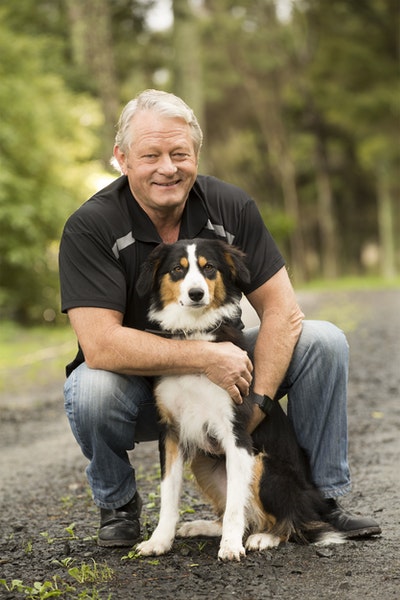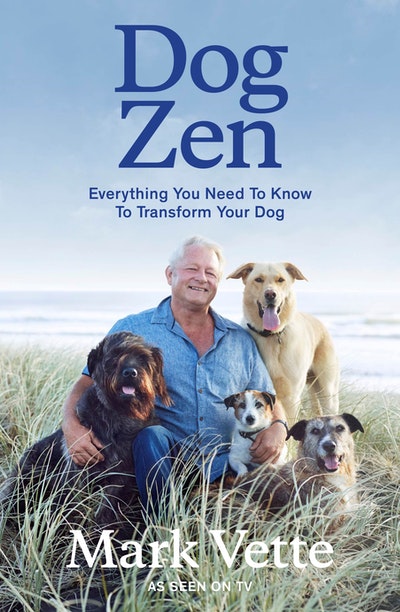Mark Vette discusses the original ancestor of today's domesticated dogs.
Our understanding of the dog has evolved incredibly in the past 10 or 15 years, but there is still some debate around the ancestral pathway dogs took to become dogs and join up with humans. A recent study has confirmed that the ancestors of dogs joined humans at least before agriculturalisation, some 12,000–14,000 years ago. It is even possible that it started with our very early ancestors as they began to imagine and create the first simple tools 3.6 million years ago, or a little later when we first used fire, 1 million years ago. At the very least, it was early in the reign of Homo sapiens, and certainly once we came out of Africa 43,000–45,000 years ago, that our relationship with wolves or at least proto-dogs may have begun.
The beginnings of the canids started with the ancestor of the wolf. Ten million years ago, early canids radiated out into three divergent arms. The most successful arm arose seven million years ago during the start of an ice age — as the climate cooled, the first real canid ancestor started to appear. It was called Canis ferox, and it resembled a hairy type of coyote with a small body and a bull-terrier-like head. This ancient ancestor to the wolf evolved through a number of iterations until some two million years ago, when one of the dog’s most significant early ancestors — the Etruscan wolf — emerged.
About 1.7–1.9 million years ago, the Etruscan wolf ventured from North America to Asia across the Beringian land bridge, and on through to Eurasia and Africa. This activated the historically significant ‘Wolf Event’, so known because of the wolves’ domination of Europe, where they successfully competed with many much bigger predators, such as giant hyenas, sabre-tooth tigers and many more. They went on to adapt into almost every possible niche and environment — from ice and desert to tropics and mountains — and became the most successful predator of their time.
Through this period, wolves began to form into kin-related family packs, enabling them to hunt larger prey and protect group members. The social coordination needed to hunt prey improved their sociability and their social brains. The need for more complex communication with larger numbers of group members grew the connections in their brains (a process called ‘gyrification’), making them more intelligent, with a greater behavioural plasticity (flexibility) and adaptability. Through this they developed a social order, with a key role of helpers evolving to assist in raising the young. This attribute would contribute significantly to the evolution of the dog.
At the same time, one of our early ancestors, Homo erectus, started travelling from Africa through the Levant (a historical geographical area around the eastern Mediterranean). Homo erectus had evolved from our early ancestors, who had moved down from the trees in Africa as the temperature warmed and the savannah grasslands took over from the forests. Homo erectus evolved from these ancestors who had hunted on the plains, and became the early hunter-gatherers. Following a similar trajectory to wolves, they too developed complex social orders motivated by hunting. Tools, fire, art and culture followed.
The first evidence of a meeting between Homo erectus and the Etruscan wolf occurred about 1.7 million years ago, soon after the wolf crossed from North America. Little is known about how or if any relationship formed. However, it was cold, and competition would have been strong among the many large competing predators, such as the saber-tooth tigers, giant hyenas and huge bears. By 30,000–40,000 years ago, the two most successful predators were Homo sapiens, in their large bands of hunter-gatherers, and the Etruscan wolf. Many of the other predators, except the wolf and the giant bears, were made extinct within 10,000–15,000 years of Homo sapiens arriving around 43,000 years ago.
This is when we think the amazing co-evolution story began properly. It is hard to imagine that man and wolf separately could have out-competed the other, more powerful predators. Certainly the wolf had dominated the land for nearly two million years, but when humans arrived they changed the landscape and out-competed most except the wolf. Is it possible that a collaboration with the wolf is what saved both man and the wolf from extinction? Together, did they out-compete the other top predators of the time? Did this need bring together humans and wolves, later to become dogs, into a unique and symbiotic relationship?
What we do know is that the social brains of Homo sapiens and the canids grew in a parallel evolutionary trajectory. And somewhere over those next tens of thousands of years, the descendent of the Etruscan wolf started to hang around human hunter-gatherers, and is believed to have self-domesticated.
With the dog’s direct ancestral wolf species now extinct, we are left with just the modern gray wolf to reflect on what the wolf has brought to the dog.
The gray wolf is adapted to hunt for large prey, like elk and moose. This is a specific niche very different from other canids, like the coyote and jackal, which can be social but are more inclined to be solitary and kill small prey. The drive to capture large prey helped the wolf evolve a social order so that it could communicate across multiple pack members. This grew its sociability, social communication and ability to co-operate.
The wolf pack normally centres on a mating pair in a monogamous bond that breeds first in a ‘whelping’ (birthing) and then a ‘rendezvous’ den over a four-month period. The pack settles temporarily for that four-month period, to raise the pups to the stage where they move out into the world. This is the very important ‘formative period’, a short, intense time of optimum learning, where the pups spend most of their time in a learning state. This time is critical to the pups’ development into stable, mature pack members. Also known as the critical period for socialisation (CPS), it is a key attribute of dogs today.
The pack is kin-related, having a mum, dad and the kids, as well as uncles and aunts. The older siblings disperse to form their own packs from around one to four years of age, but before that they become the very important ‘helpers’. Their role is to help Mum and Dad raise their younger siblings to adulthood. While there is a social order with a hierarchy, where younger adults are subordinate to the elders, this is more like a parental or uncle/aunt relationship: ordered yet subtle, with mainly postural language and signals mediating the interactions. The older wolves ‘mentor’ the young, a bond that is very important in aiding learning and social integration. It is this critical helper role that receives the pup as it moves away from Mum, mimicking our bond with our dogs.
The most important factors that I believe contributed to making the wolf the progenitor of the dog are its intelligence, neuro-plasticity (flexible brain, resulting in adaptability), its peer-to-peer social communication system, and its ability to form amicable social bonds similar to humans. But of course the story doesn’t end there. We all know that a wolf is a wolf, and the dog became a dog. There are significant differences which make the dog distinctly a dog, which is explored and explained in more detail in Dog Zen.














